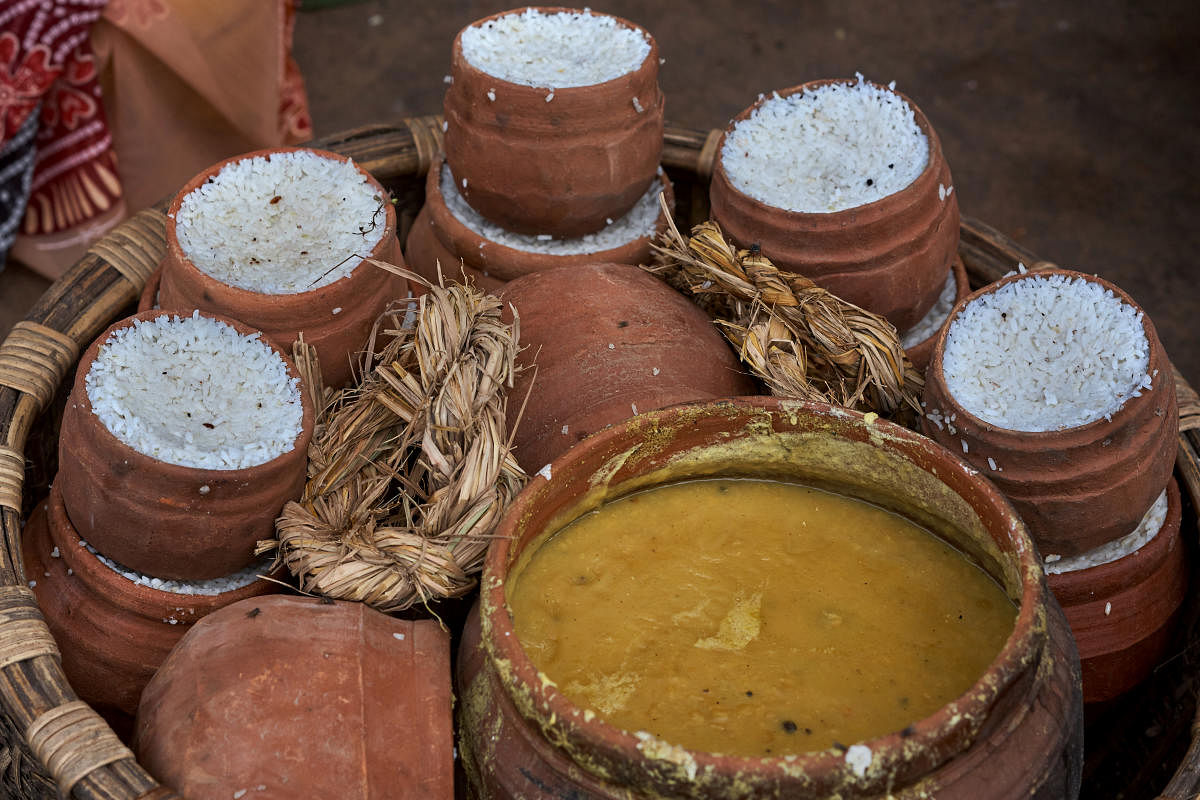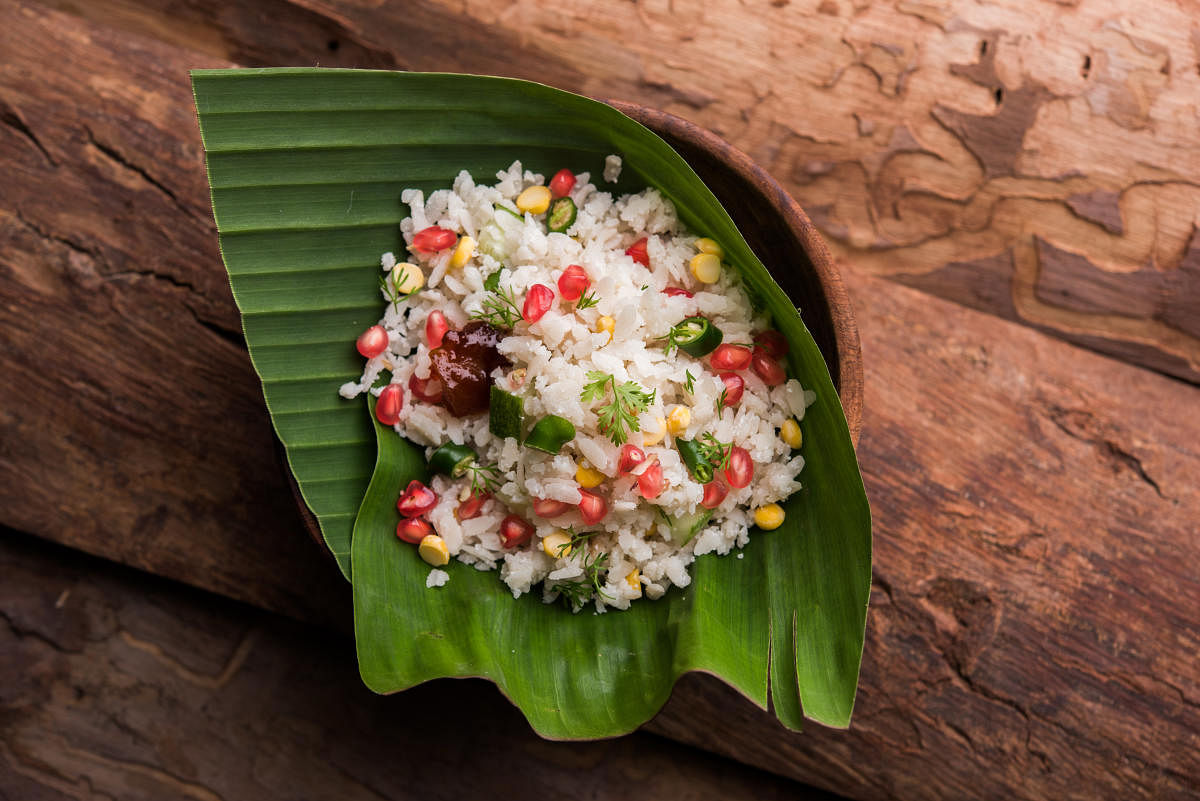

On a quest to research bhog/naivedya or food offerings to deities, I discussed sacred foods with priests and temple cooks at religious sites big and small, as well as visited the commercial kitchens of some of our ancient, popular and large temples. The entire experience turned out to be an eye-opener. Three aspects stood out in the many sites I visited: the devotion of those involved in making and offering of food to the deities; the attention to purity in everything involving the food preparation and thirdly, the strict compliance with recipes handed down from generation to generation resulting in standardisation of taste and quality.
There are various prevailing practices for maintaining the purity of food offerings: Food for the deity is not to be tasted until it has been offered and sanctified. Bhog is to be prepared in an atmosphere of devotion and spiritual upliftment, without being subjected to negative emotions such as anger. Visitors and devotees are not usually permitted into temple kitchens, limiting the persons present during food preparation and thereby improving food safety. Utensils and tools used in food preparation are scrupulously cleaned before use. Personal hygiene is required for all those having access to the kitchens and/or the food. What is it that gives the incomparable taste and flavour to prasadam, so much so that even a capable cook strictly following a temple recipe, cannot replicate the flavours?
Quite apart from the perceived grace of sanctified food, there are many factors that I think go into this unique taste. Temple foods almost always blend in with the cuisine of the locale the temple is situated in, using indigenous, locally sourced, seasonal ingredients and following traditional processes. The daily menu for the deity is in accordance with the diktat of the applicable Agama Shastras and has been followed in most ancient temples for as long as anyone can remember. Priests I talked to invariably mentioned that procurement was made from the freshest and best available ingredients and produce. A large part of the cooking, across temples in India, is in ghee, with a judicious mix of spices including black pepper, cumin and dry ginger/saunth. Cooking the food offerings for the deities (though not necessarily for bulk preparations as prasadam for distribution to devotees) is even today largely done by steaming or boiling, or a slow cooking process on firewood. The utensils used are of traditional material: iron, brass, copper and various alloys as well as earthenware.
At the Jagannath temple at Puri, for instance, suaras/temple cooks are required to eat their fill before they enter the kitchen and to desist from consciously smelling the food or tasting it. They, therefore, identify that the food is cooked and ready by sight and time rather than taste or smell. They need to bathe before entering the kitchen and are not to grow beards or moustaches or chew paan/ betel leaves. The firewood used is inspected for pests or damage. Earthenware pots are used for
cooking and new pots are used for each batch, with dedicated potters making them only from specific clay resources. The pots are arranged in lotus shape or in vertical columns, each of which has its own effect on the bhog being cooked to perfection. All water for the kitchen is only from the two wells, Ganga and Jamuna.
Temple food is prepared in large quantities, following specific recipes and processes, using the best ingredients, resulting in the prasadam we eat always having the same remembered flavour and taste. This is difficult to replicate in the much smaller quantities and the non-standard ingredients from diverse sources that we obtain them from. Firewood and mud hearths and the vessels used for cooking also add to the taste as they enable slow cooking with equal distribution of heat to the entire surface. The processes used, the utensils, the local and seasonal nature of the ingredients all help retain the nutritional value of the food.
Consistency in processes, quality sources for ingredients, standardisation of recipes, hygiene in food preparation, all contribute to the unmatchable taste of temple food. With, of course, the divine touch, enhancing it all.
Temple food culture has always been subconsciously followed in our homes, though it is more visible on festival days. We follow recipes that have been in the family for generations or reach out to social media for reliable recipes for sacred foods. Rituals are followed as scrupulously as feasible and many of us are also opting for traditional grains, stone mortars and pestles, soapstone, earthenware and iron cookware in our kitchens to pay our tributes to God.
(The writer is the author of Bhog Naivedya: Food offerings to the Gods, published by Rupa.)